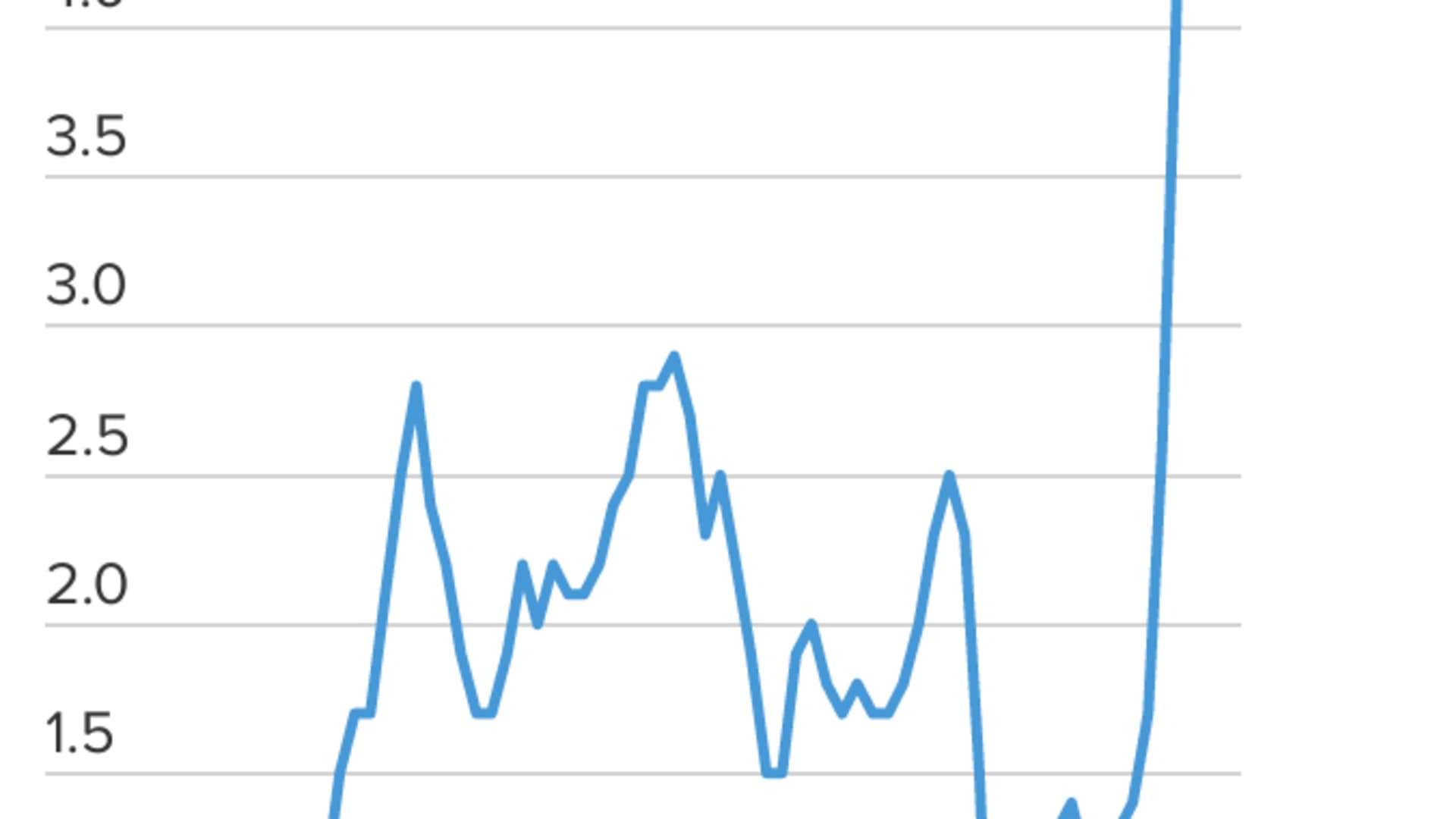
- The Federal Reserve on Wednesday said it would keep its benchmark interest rate near zero.
- But with inflation on the rise, this low-interest rate environment will not last.
- Here are some money moves to make now.
The Federal Reserve said Wednesday it will keep its benchmark interest rate near zero despite signs inflation is heating up.
While rising prices brought on by supply constraints and a sudden spike in consumer demand are paving the way for the Fed to unwind last year's bond buying, the central bank said it is sticking with ultra-accommodative monetary policies for now. (The tapering of bond purchases is seen as the first step on the way to interest rate hikes.)
The Hurricane season is on. Our meteorologists are ready. Sign up for the NBC 6 Weather newsletter to get the latest forecast in your inbox.
"Right now, there's two things happening: a squeeze in supply and an increase in demand," said Yiming Ma, an assistant finance professor at Columbia University Business School. "A squeeze in supply tends to be temporary, demand is likely here to stay."
More from Personal Finance:
Wages are rising, but inflation may have given workers a pay cut
This investment option can provide protection against inflation
Americans’ inflation fears reach a fever pitch
The International Monetary Fund warned Tuesday that there's a risk inflation will prove to be more than just transitory, pushing central banks to take pre-emptive action. Treasury Secretary Janet Yellen also cautioned that the price increases are likely to continue for at least several months.
Money Report
And cases of the delta variant are spiking in a handful of states, putting the economic rebound from the pandemic in jeopardy.
"The Covid delta variant puts a wrinkle in what we'd thought was a steady path toward Fed tapering," Bankrate.com chief financial analyst Greg McBride said. "Rising infection rates and belief that peak economic growth is behind us make the Fed even more hesitant to consider removing accommodation."

Although the federal funds rate — which is what banks charge one another for short-term borrowing — is not the rate that consumers pay, the Fed's moves still affect the borrowing and saving rates they see every day.
The Fed's historically low borrowing rates make it easier to access cheaper loans, but also make it less desirable to hoard cash.
Here's a breakdown of how consumers can take advantage of these easy monetary policies while they last.
Borrowers get a leg up
For starters, homeowners have an unparalleled opportunity to refinance or take some money out of their houses at record-low rates.
The average 30-year fixed rate home mortgage is around 3.04%, the lowest since February, according to Bankrate.
"The ability to refinance a mortgage and cut your payment by $150 to $200 a month creates valuable breathing room in the household budget," McBride said.
Once the Fed starts to slow the pace of bond purchases, long-term fixed mortgage rates will inevitably move higher, since they are influenced by the economy and inflation.
Many homeowners with adjustable-rate mortgages or home equity lines of credit, which are pegged to the prime rate, will also be affected. While some ARMs reset annually, a HELOC could adjust within 60 days.
The same goes for other types of debt, particularly credit cards.
Credit card rates are now as low as 16.16%, down from a high of 17.85%, according to Bankrate.
When the federal funds rate does rise, the prime rate will as well, and credit card rates will follow suit since most credit cards have a variable rate, which means there's a direct connection to the Fed's benchmark. Cardholders will see the impact within a billing cycle or two.
For now, borrowers can use a home equity loan or personal loan to consolidate and pay off high-interest credit cards.
The average interest rate on personal loans is down to 10.77% and a home equity line of credit is as low as 4.24%, according to Bankrate.
When it comes to college debt, even student borrowers are getting a break thanks to the CARES Act, which paused federal student loan repayment through September.
This is a great time to stay up-to-date on payments, McBride said. "With no interest accumulating on federal student loans, you can really make a big dent in the principle," he said.
Savers need to be resourceful
Anyone stashing cash will have a harder time leveraging low interest rates to their advantage.
Although the Fed has no direct influence on deposit rates, those tend to be correlated to changes in the target federal funds rate, and, as a result, savers are earning next to nothing on their cash.
Since March 2020 when the Fed cut its benchmark rate to near zero, the average online savings account yield has fallen from 1.75% to 0.45%, according to DepositAccounts.com founder Ken Tumin.
At some of the largest retail banks, the average savings account rate is even lower, down to a mere 0.06%, or less.
"In addition to Fed policy, the record level of deposits at banks along with weak loan demand has contributed to record-low deposit rates," Tumin said. "This will likely be a headwind on deposit rates even after the Fed begins to raise its benchmark rate," he added.
When the inflation rate is higher than savings account rates, the money in savings loses purchasing power over time.
Investors concerned about inflation eroding the value of their money may want to be more proactive when it comes to the fixed income portion of their portfolios.
One of the ways to do that is with Treasury inflation-protected securities. Stocks and mutual funds will also beat inflation over the long haul, but that will require taking on more risk — at a particularly precarious time, according to HYCM chief currency analyst Giles Coghlan.
While equity investments have increased in value over recent months as global indices hit unprecedented levels, that's largely due to the support they have found in loose monetary policy, Coghlan noted.
Once the Fed signals an end to their easy monetary policy stance, "then equity markets will fall, which will affect those with holdings in this market."
"Diversify across a range of investments that would fare well under different circumstances," Columbia's Ma advised. "Some protection is good," she said, but don't "put all the eggs in the basket of high inflation."






